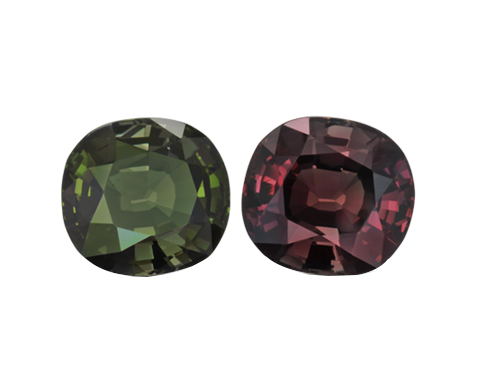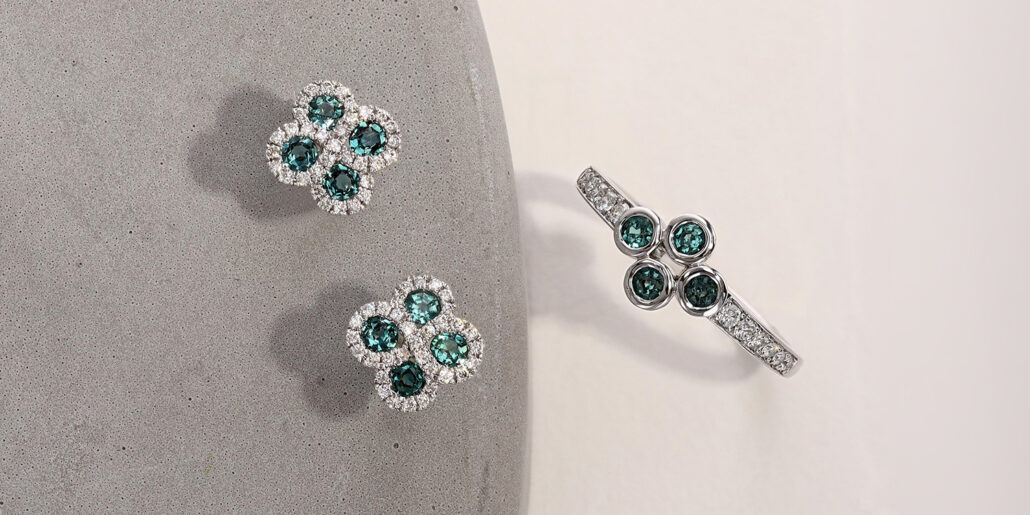Alexandrite: June Birthstone Quick Facts
Alexandrite Color: Green, yellow, blue, red, pink, purple, gray
Alexandrite Mohs Hardness Scale Rating: 8.5
Alexandrite Symbolism & Meaning: Fortune, luck and embracing change
Alexandrite Zodiac Signs: Gemini and Cancer

What is Alexandrite?
Alexandrite is a rare form of chrysoberyl. First discovered in 1830 in the Ural Mountains in Western Russia, alexandrite is one of the rarest gemstones in the world. The finest examples of alexandrite have the unique characteristic of appearing green in natural or fluorescent light and glowing brownish or purplish red in incandescent light. While other gems can change color depending on a light-source change, Alexandrite’s is so dramatic that the phenomenon is often called “the alexandrite effect.” Alexandrite’s color changing properties are due to trace amounts of chromium.
Alexandrite Color & Value
Natural alexandrite is very rare, and even lab-created stones are expensive. When certain types of long, thin inclusions are oriented parallel to each other, they can create an additional phenomenon called chatoyancy, or the cat’s-eye effect, increasing the alexandrite’s value.
Due to limited supply in nature, lab-grown Alexandrite was created in the 1960s. Alexandrites can be grown through melt, hydrothermal, or flux methods in a lab. These synthetic stones have the same chemical and physical properties as natural alexandrites. Although synthetic alexandrites are far less expensive than natural alexandrites, they’re still among the most expensive synthetic gemstones available. They tend to have a blue to purple color change.

Alexandrite Care & Cleaning
Citrine is easily cared for, requiring cleaning with a gentle solution made specifically for jewelry. Borsheims also offers small “ultrasonic” cleaners that clean your jewelry with high-frequency sound. It is important to have your jewelry professionally cleaned and checked three to four times a year. When not worn, citrine jewelry should be stored in a jewelry box lined with soft fabric.
Alexandrite Jewelry & Gift Ideas
Whether you are shopping for yourself or someone else, Borsheims has an extensive selection of alexandrite jewelry in various styles. Alexandrite is a popular gift option for those celebrating June birthdays . If you need help picking out the perfect piece of alexandrite jewelry, one of our experts would be happy to assist you. Stop into our store or text or call 402.391.0400 during store hours to speak with one of our friendly and knowledgeable sales associates.

